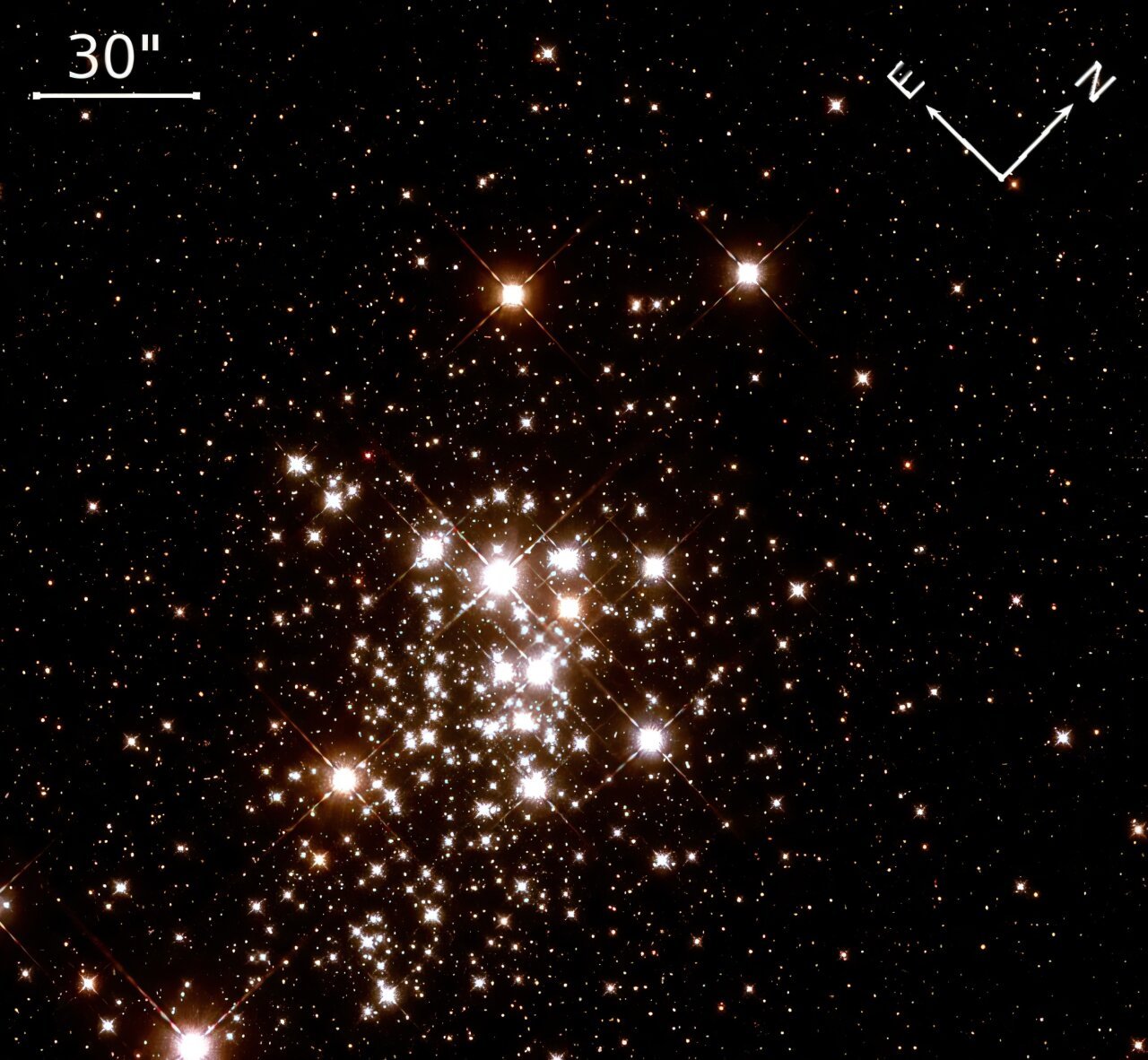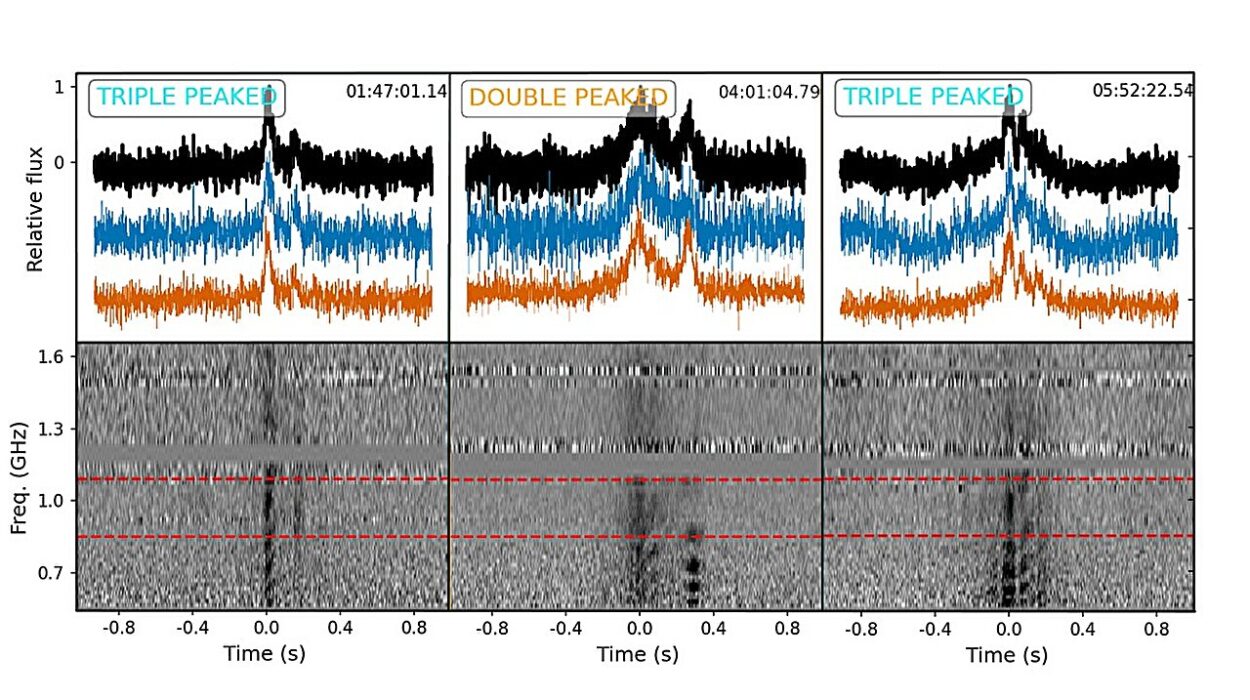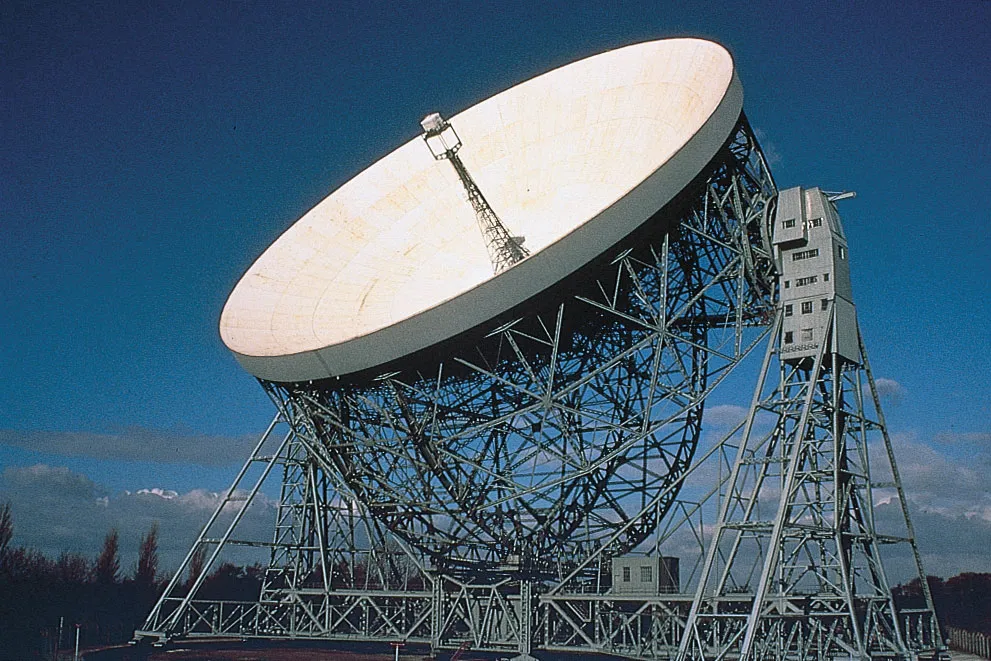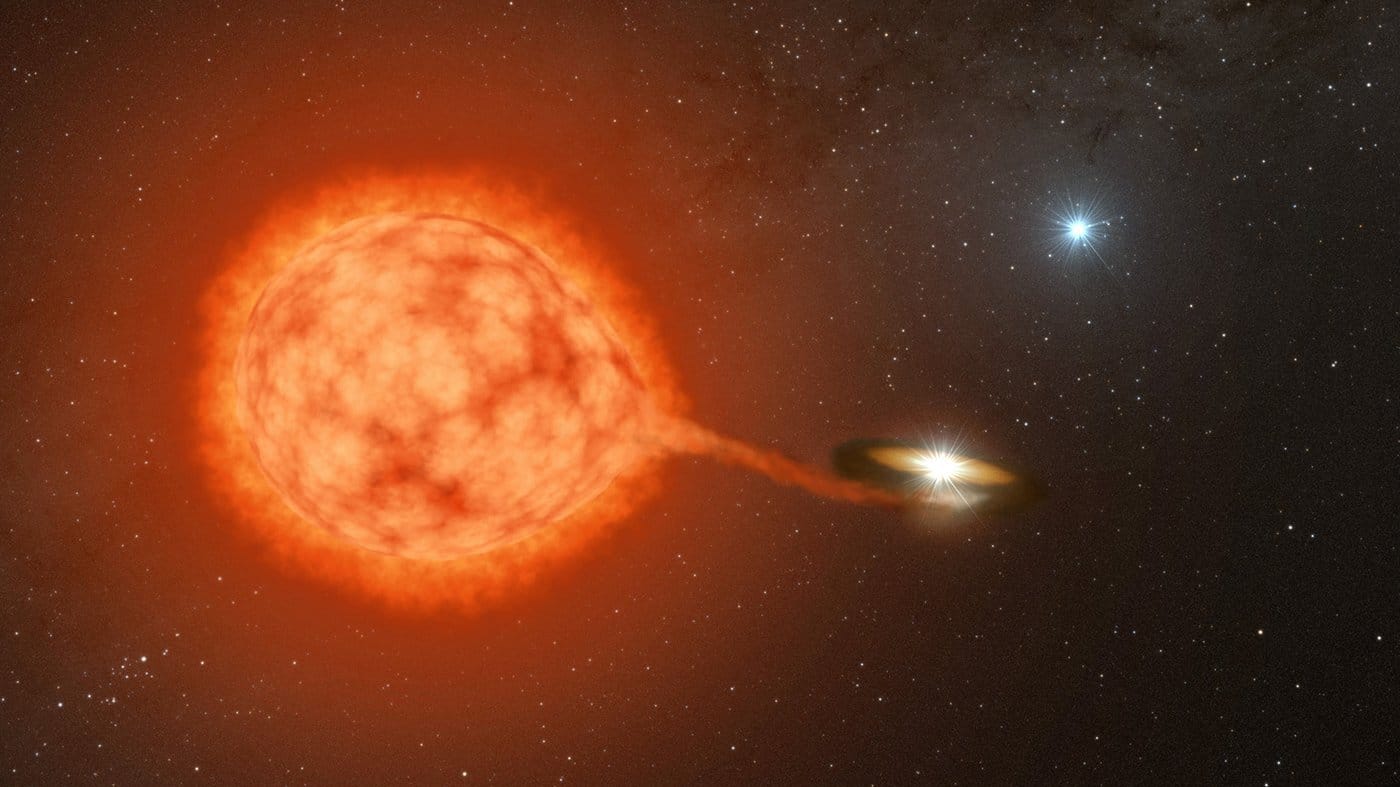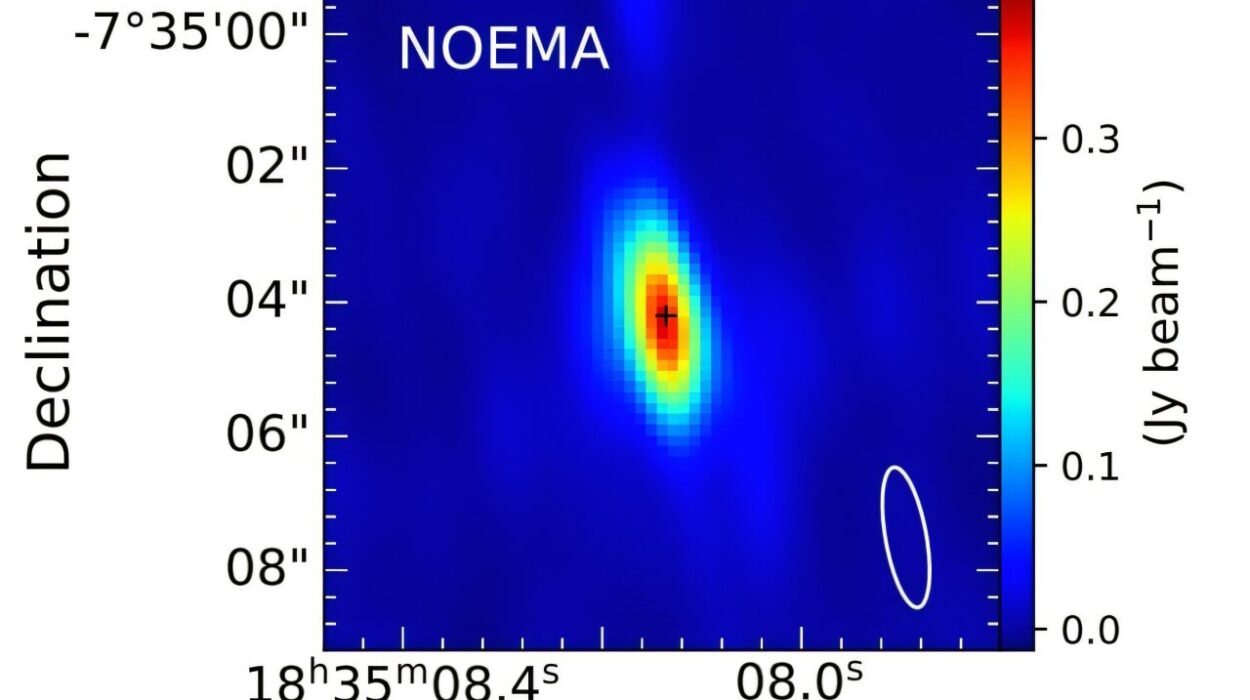In an exciting new study published on January 28 on the pre-print server arXiv, astronomers have used the Hubble Space Telescope (HST) to investigate Westerlund 1, a supermassive young star cluster located roughly 13,800 light years away. This study, led by Lingfeng Wei from the University of California, San Diego (UCSD), reveals a wealth of new information about the structure, kinematics, and evolution of this fascinating stellar object. The detailed findings shed light on its formation, star distribution, and overall dynamics, helping astronomers further understand the processes that govern massive clusters and their role in stellar evolution.
What Are Open Clusters?
Before diving into the specifics of Westerlund 1, it’s essential to understand what constitutes an open cluster (OC). Open clusters are groups of stars that form from the same giant molecular cloud and remain loosely gravitationally bound to one another. These clusters typically contain a few hundred to a few thousand stars, many of which are young, hot, and still in the early stages of their lives. Superstar clusters (SSCs) are a subclass of open clusters that are especially massive and contain a larger number of young, massive stars. These clusters are considered to be some of the most prominent sites of star formation and are particularly important for understanding the early stages of stellar life.
Westerlund 1: A Galactic Marvel
Westerlund 1 is one of the largest and most massive young stellar clusters within the Milky Way galaxy. Its estimated mass ranges from 50,000 to 100,000 solar masses, making it a prime example of a superstar cluster. With a radius of about 3.26 light years, this massive cluster contains a wealth of stars with a wide range of masses and ages. The cluster’s youth, estimated at 5–10 million years, and its proximity make it an ideal laboratory for studying the star formation process, stellar dynamics, and other key astrophysical phenomena.
Westerlund 1’s significance lies not only in its size and mass but also in the diversity of stars it hosts. The cluster is home to some of the most massive stars known, including Wolf-Rayet stars, supergiants, and massive stellar remnants such as neutron stars and black holes. This variety provides a unique opportunity for astronomers to explore the life cycles of stars across different stages of their evolution.
A Detailed Look at Westerlund 1
Given its importance as a stellar formation site, Westerlund 1 has attracted significant attention from astronomers. The Hubble Space Telescope (HST), equipped with advanced imaging and spectroscopic instruments, provided the perfect tool to examine the cluster in unprecedented detail. The team, led by Lingfeng Wei, used the Hubble’s capabilities to measure proper motions (PMs) of over 10,000 stars in the cluster. These proper motions provide valuable insights into the velocities of individual stars within the cluster, allowing researchers to understand their kinematic properties and membership within the cluster.
Stellar Density Map and Cluster Shape
One of the primary objectives of this study was to map the stellar distribution within Westerlund 1. To do this, the researchers constructed a stellar density map by measuring the stars’ positions and velocities. By applying corrections for spatial reddening (caused by interstellar dust), the team was able to more accurately depict the cluster’s structure.
Their findings reveal that Westerlund 1 has an elongated shape, oriented in a northeast-southwest direction. This alignment corresponds with the orientation of the galactic plane, further linking the cluster to the broader galactic structure. The cluster’s shape and orientation suggest that it may have been influenced by the galactic environment in which it formed. In fact, the cluster’s eccentricity—a measure of how elongated the shape is—was found to be approximately 0.71, which is quite high compared to other clusters. The semi-major axis of Westerlund 1 aligns at a position angle of about 56 degrees east of north, reinforcing its alignment with the galactic plane.
The high eccentricity could be a result of the molecular cloud from which Westerlund 1 formed, possibly inheriting its elongated shape. Alternatively, it may reflect a dynamic formation process in which multiple substructures merged to form the current cluster. This hypothesis is supported by the finding that the eccentricity decreases as the mass of the cluster increases, which may suggest that the cluster’s early development was influenced by the merger of different regions within the molecular cloud.
Kinematic Analysis: Velocity Dispersion and Star Formation Efficiency
In addition to mapping the cluster’s shape, the study also analyzed the kinematic properties of the stars in Westerlund 1. The velocity dispersion—a measure of the spread in velocities of the stars—was calculated to be around 3.42 km/s. Interestingly, this value is lower than what would be expected if the cluster were in virial equilibrium, a state in which the internal motions of the stars are balanced by their mutual gravitational attraction.
The fact that Westerlund 1 is subvirial—meaning it has a velocity dispersion smaller than expected for virial equilibrium—suggests that the cluster may have experienced high star formation efficiency when it was formed. It is likely that over 56% of the gas within the cluster was converted into stars during its formation, making it an exceptionally efficient site for star formation. Alternatively, it could also point to the possibility that stellar feedback—the process by which stars release energy into their environment, for example, through stellar winds or supernovae—was inefficient, leading to gas expulsion before stars in the cluster could reach full maturity.
Crossing and Relaxation Times: Understanding the Cluster’s Evolution
Two other key metrics, the crossing time and the relaxation time, were also calculated for Westerlund 1. The crossing time is the average time it takes for a star to traverse the cluster, while the relaxation time refers to the time it takes for the cluster to reach a state of equilibrium where its stars have redistributed in such a way that they have a more stable configuration.
For Westerlund 1, the researchers found that the crossing time is approximately 300,000 years, while the relaxation time is much longer, around 260 million years. These timescales suggest that the cluster is still in the process of evolving and that it has not yet reached a fully relaxed state. The relatively short crossing time compared to the relaxation time indicates that the cluster’s stars, particularly those with masses up to 10 solar masses, have likely undergone some degree of mass segregation—a process by which more massive stars tend to move toward the center of the cluster over time.
Conclusions and Implications for Stellar Formation
The findings from this study provide a clearer picture of the dynamics and evolution of Westerlund 1, one of the most massive young star clusters in our galaxy. The study underscores the role of star formation efficiency and feedback mechanisms in shaping the evolution of these clusters. It also highlights the importance of using advanced instruments like the Hubble Space Telescope to probe the kinematics and structure of distant stellar systems.
Westerlund 1 serves as an invaluable example of a starburst environment, offering a glimpse into the conditions that prevail during intense episodes of star formation. As astronomers continue to study this fascinating cluster, they will uncover even more insights into the processes that govern the formation and evolution of massive stellar clusters, and by extension, the broader workings of our galaxy.
These findings also have broader implications for our understanding of how massive stars evolve, how they interact with their environment, and how stellar clusters like Westerlund 1 may eventually break apart or transform into different types of stellar systems as they age. With its combination of youth, size, and proximity, Westerlund 1 continues to be a key laboratory for studying the life cycle of stars and the complex dynamics that govern their formation.
Reference: Lingfeng Wei et al, Structure and Dynamics of the Young Massive Star Cluster Westerlund 1, arXiv (2025). DOI: 10.48550/arxiv.2501.16755
